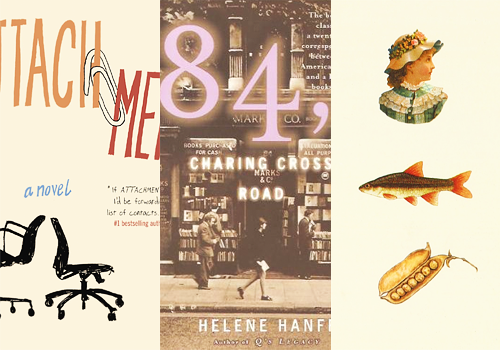In Case of Inspiration Emergency: Write a Letter to a Character

Whether you’re a planner or not, there’s one thing every writer will need as they prepare for NaNoWriMo: inspiration. We’ve challenged some of our favorite authors, and the NaNo staff to inspire you by sharing what’s inspired them… and challenging you to prepare a specific jumpstart for that inevitable idea drought:
The Inspirer: Sarah Mackey, NaNoWriMo Director of Community Engagement
The Inspiration Sources:
Ella Minnow Pea , by Mark Dunn
84, Charing Cross Road , by Helene Hanff
Attachments , by Rainbow Rowell
The Jumpstart: Write a short letter to one of your possible characters for them to respond to in November.
Why This Will Inspire You: I’ve been contemplating writing an epistolary novel for NaNoWriMo this year. For those who aren’t familiar with the concept, it’s a story written in the form of documents, usually letters. They are among my favourite type of novels to read, and although I’ve often included various letters, emails, text messages, and other documents in previous novels, I’ve never gone 100% epistolary before.
The three novels I listed above are three of my favourite epistolary novels, and they’re all incredibly different. 84, Charing Cross Road is probably the most traditionally epistolary of the three; it’s an epistolary memoir, the story of the twenty years of letters the author and a bookseller in London wrote to each other. It is a delight, and I recommend it heartily.
Attachments, by Rainbow Rowell, is not a purely epistolary novel—half of it is a third-person traditional narrative. But the epistolary sections are some of the best I’ve ever read. Rainbow Rowell’s gift for creating real, three-dimensional people is even more impressive when all she has to develop them is their email correspondence. It’s a study in character development to read this novel.
But perhaps the most impressive of these three is Ella Minnow Pea, my all-time favourite epistolary novel. It is set on a fictional island where the inhabitants worship the creator of the sentence “The quick brown fox jumps over the lazy dog.” When the letters start falling off the statue of the creator, they ban the use of those letters in real life. What does that mean for the novel? Every chapter, which consists of letters from an island resident to an off-island relative, uses fewer and fewer letters of the alphabet, until the very end when only a handful of letters remain legal.
It’s one of the most impressive pieces of writing I’ve ever encountered, and the story is hilarious and clever and well-written. It also serves as a double-dose of inspiration.
When you’re stuck writing your novel this year, think about throwing in one of Dunn’s tricks. Cover some plot territory in a letter or an email. Or, if you’re really up for a challenge, try picking a letter and writing without it for a couple of hundred words. Your pace might slow down, but your brain will wake up and you’ll find yourself looking at your writing in a totally different way. Maybe your book is 26 chapters long, and each chapter is missing a single letter. Maybe you only pull out that trick when you’re really flagging. Regardless, looking at new ways to think about language can only benefit your writing.
If you pull it off, be sure to send me an excerpt. I’d love to read it.
Chris Baty's Blog
- Chris Baty's profile
- 63 followers



